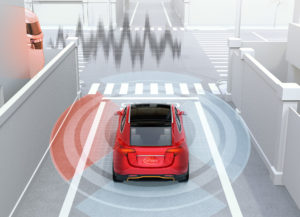Today’s advanced driver-assistance systems (ADAS) are based on cameras, radar, or lidar. As a result, their target objects need to be within the line of sight to be recognized by the system. This, however, turns into a weakness when it comes to emergency vehicles as they can be heard much earlier than they can be seen. As a result, they are invisible to ADAS for a longer time.
 To address this challenge, Infineon Technologies AG and Reality AI have created an advanced sensing solution, giving vehicles the sense of hearing. This solution adds XENSIV MEMS microphones to existing sensor systems. It enables cars to “see” around the corner and to warn about moving objects hidden in the blind spot or approaching emergency vehicles that are still too distant to see.
To address this challenge, Infineon Technologies AG and Reality AI have created an advanced sensing solution, giving vehicles the sense of hearing. This solution adds XENSIV MEMS microphones to existing sensor systems. It enables cars to “see” around the corner and to warn about moving objects hidden in the blind spot or approaching emergency vehicles that are still too distant to see.
The new sensing solution, which will be showcased at Infineon’s Virtual Sensor Experience, is based on XENSIV MEMS microphones in combination with AURIX microcontrollers (MCU) and Reality AI’s Automotive See-With-Sound (SWS) system.
By using machine-learning-based algorithms, the system is able to detect emergency vehicles, cars, and other road participants — even if they cannot be seen by drivers or detected by the sensors incorporated in the vehicles’ ADAS.
Machine learning also ensures that the country-specific sirens of emergency vehicles are recognized in all parts of the world.
The automotive-qualified XENSIV MEMS microphone IM67D130A has an increased operating temperature range from -40° to +105° C, allowing various use cases in harsh automotive environments. The low distortions (THD) and the high-acoustic overload point (AOP) of 130 dB SPL enable the microphone to capture distortion-free audio signals in loud environments. This permits a reliable classification, even if the siren sound is hidden in high background or wind noise.
The sound-base sensing technology can also enable other applications in vehicles, such as road condition monitoring, damage detection or even predictive maintenance.
For processing the audio signal, the Reality AI software makes use of Infineon’s AURIX TC3x family of MCUs which is widely used across multiple automotive applications. The scalable MCU family offers a range from one to six cores and up to 16 MB of Flash with functional safety up to ASIL-D according to the ISO26262 2018 standard and EVITA full cybersecurity. AURIX TC3x gives customers the performance and flexibility to implement XENSIV MEMS microphones in ADAS use-cases.
Filed Under: Automotive, Machine Learning, News


Questions related to this article?
👉Ask and discuss on Electro-Tech-Online.com and EDAboard.com forums.
Tell Us What You Think!!
You must be logged in to post a comment.